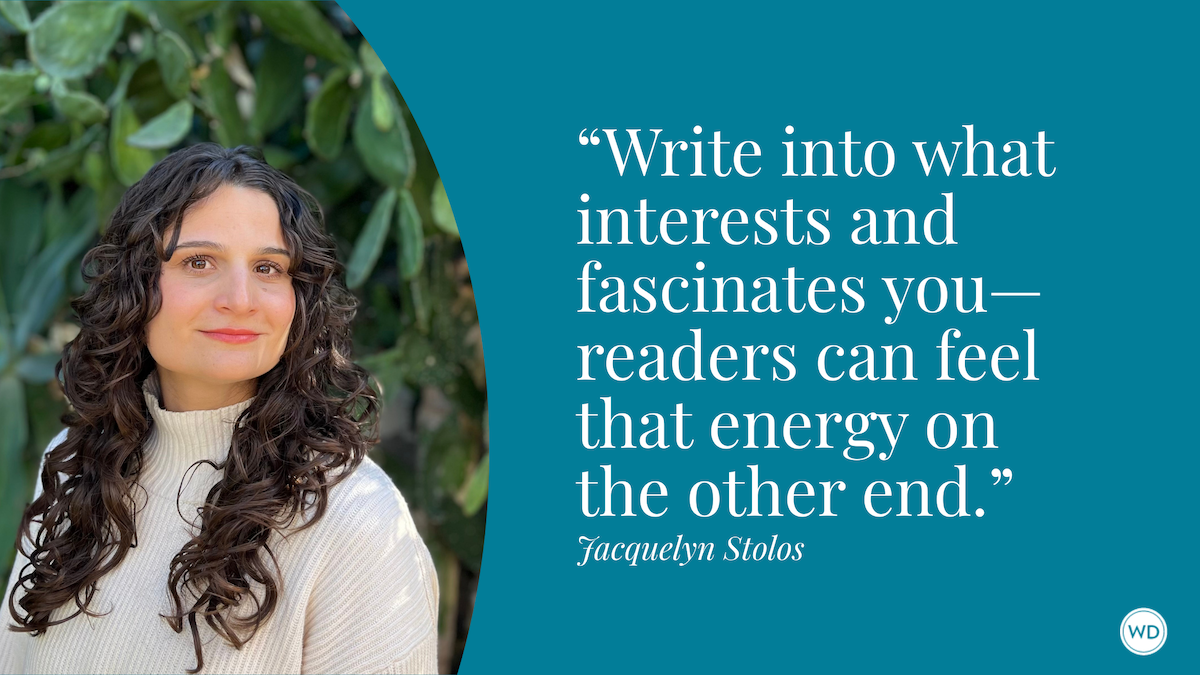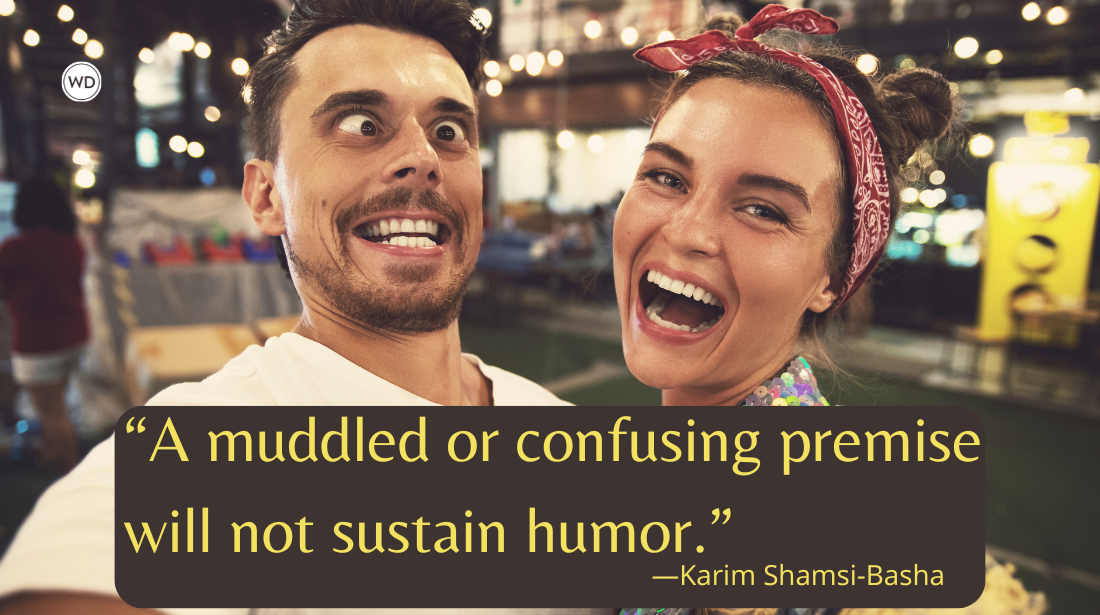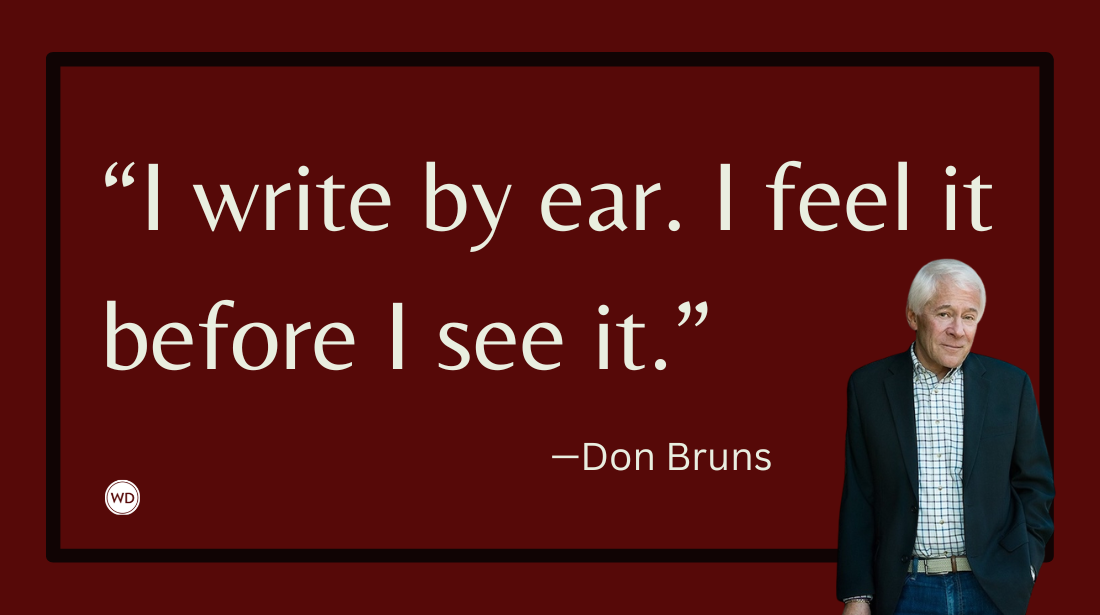Fracturing Fairy Tales to Jumpstart Your Writing
Bestselling author Chris Grabenstein shares his process for fracturing fairy tales to jumpstart your writing.
When I was a kid, I used to love the “Fractured Fairy Tales” shorts that appeared on the Rocky and Bullwinkle animated TV show. They took classic fairy tales, like Sleeping Beauty, and added a goofy modern twist to create hysterical gems like Leaping Beauty.
When I wasn’t watching “Fractured Fairy Tales,” I was reading MAD magazine, which often included a quick cartoon about “Fairy Tale Scenes We’d Like To See.” A classic by the genius illustrator Don Martin goes like this:
- Frame 1 - A sad princess sits alone beside a pond.
- Frame 2 - A pair of reptilian eyes pop up in the pond. The princess immediately imagines a charming prince in need of a kiss.
- Frame 3 – The princess leans in, lips puckered, aiming for her frog.
- Frame 4 – Oops. Turns out those frog eyes were actually attached to a crocodile who’s just had a lovely meal of sappy princess.
What makes these stories work so wonderfully is that we, the viewer or the reader, already know the back story. You title your story “Leaping Beauty” and I already think I know what’s going to happen. I see a comic strip with an opening frame of a princess pining beside a pond, I know she’s looking for some amphibious love.
When my wife J.J. and I set out to co-author “Stinky’s Stories,” we knew we wanted to start with well-known stories and tales. Something that our 6-10-year-old readers were already familiar with. The Boy Who Cried Underpants, of course, starts with the classic Aesop fable about the boy who cried wolf. Jack and the Beanstink uses Jack and the Beanstalk as its springboard.
But, in our books, the kids sitting on the library rug listening to their librarian read these classics aren’t thrilled with how the stories end. For instance, what happened to the sheep after the wolf attack? Were they okay?
With the help of Stinky, a skunk stuffie who lives on the school library’s shelves, they are able to use their imaginations and spin a wild new ending.
A lot of my middle grade author friends have had fun fracturing fairy tales. Grump, by Liesl Shurtliff, tells “The (Fairly) True Tale of Snow White and the Seven Dwarves.” A Tale Dark & Grimm, by Adam Gidwitz, has Hansel and Gretel walk out of their own story and into a bunch of other fairy tales penned by the Brothers Grimm. Cinder & Glass, Melissa de la Cruz’s story for a slightly older audience, is a fantastic retelling of Cinderella.
This list goes on and on.
Reimagining a classic tale is always a great way to get your writing flowing. A lot of the back story and character development work is already done for you. It’s a lot easier to write West Side Story if Romeo and Juliet already exists.
When you see the title Jack and the Beanstink, you already know how Jack chopped down the beanstalk and the giant fell to earth. In some versions, sadly, the giant dies. In others? Well, the narrator never really tells us. They’re too busy showing us how Jack and his mom are living happily ever after.
But, what if the giant got stranded on earth? What if there was no way for him to get back home to the clouds because Jack had eliminated the one direct access route to his castle (the beanstalk)? What if the poor giant had to fend for himself and find a job, not to mention a ready supply of six-foot-long hero sandwiches to nibble on? (Luckily, in our retelling, he winds up as the big man on a basketball team.)
Check out Chris Grabenstein's Jack and the Beanstink here:
(WD uses affiliate links)
With the characters and inciting incident already established, J.J. and I could use our imaginations to dream up what might’ve happened next.
Working with a known story can free you up for a good creative reach and stretch. Some of the expositional heavy lifting is already done, so you can move on to new twists and turns. You just have to add all the “what ifs?”
Why did the boy in the Aesop fable cry wolf? What if it was because he was bored counting sheep all day. Hey, it’ll make a kid drowsy. Maybe he craved excitement and adventure. What if, when he lost his job in the sheep meadow, he set off to the big city to seek new adventures and fun new things to cry out?
We’re hoping that our Stinky’s Stories series will not only be a lot of fun for early readers but will also, hopefully, inspire kids to use their imaginations to see what alternate endings or twists they might give to classic tales.
And if a few adult writers did the same thing to jump start their creative flow? Well, that would be fun, too!
Check out Chris Grabenstein's The Boy Who Cried Underpants here:
Chris Grabenstein is the multiple award-winning, #1 New York Times bestselling author of the Lemoncello, Wonderland, Haunted Mystery, Smartest Kid, and Dog Squad series. He co-authored the acclaimed Shine! with his wife J.J. Grabenstein, as well as nearly three dozen fast-paced and funny page turners with James Patterson including the I Funny, Jacky Ha-Ha, Treasure Hunters, and Max Einstein series. He's written Audible Originals, short stories, and stage plays. After graduating from the University of Tennessee in Knoxville, Chris moved to New York City and started doing improvisational comedy in Greenwich Village. During those years, he also wrote for the Muppets and helped create the CBS holiday classic The Christmas Gift starring John Denver. He then spent 17 years writing radio and television commercials for brands such as KFC, Dr Pepper, Seven Up, and many others. His first boss in advertising was James Patterson. Chris, the current president of the Mystery Writers of America, and his wife J.J. still live in New York City with two cats and lots of ideas. (Photo credit: J.J. Grabenstein)









